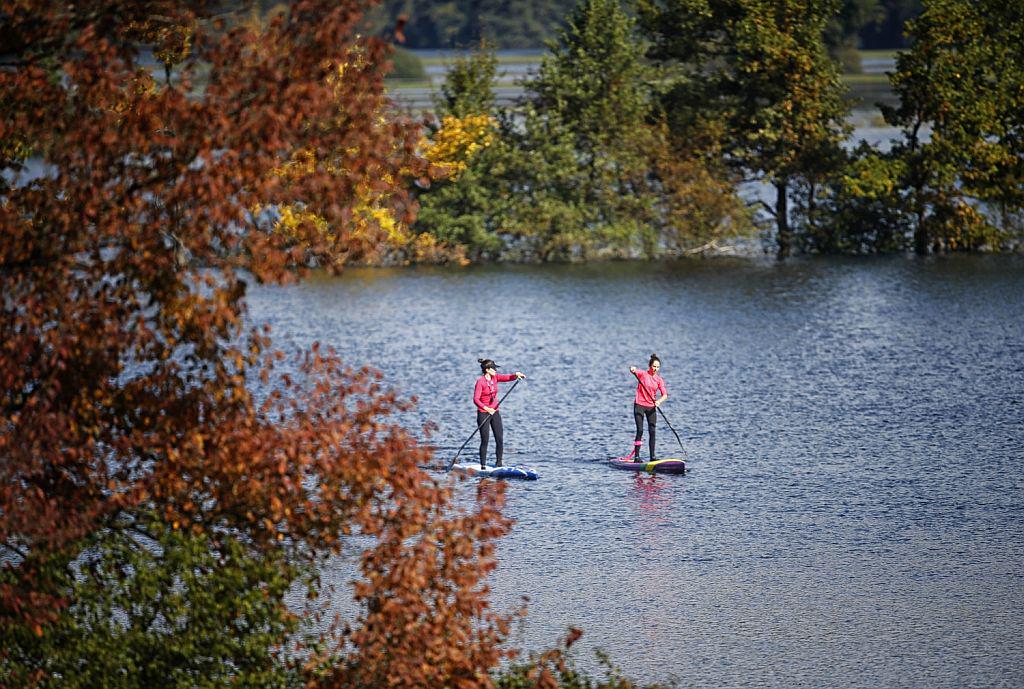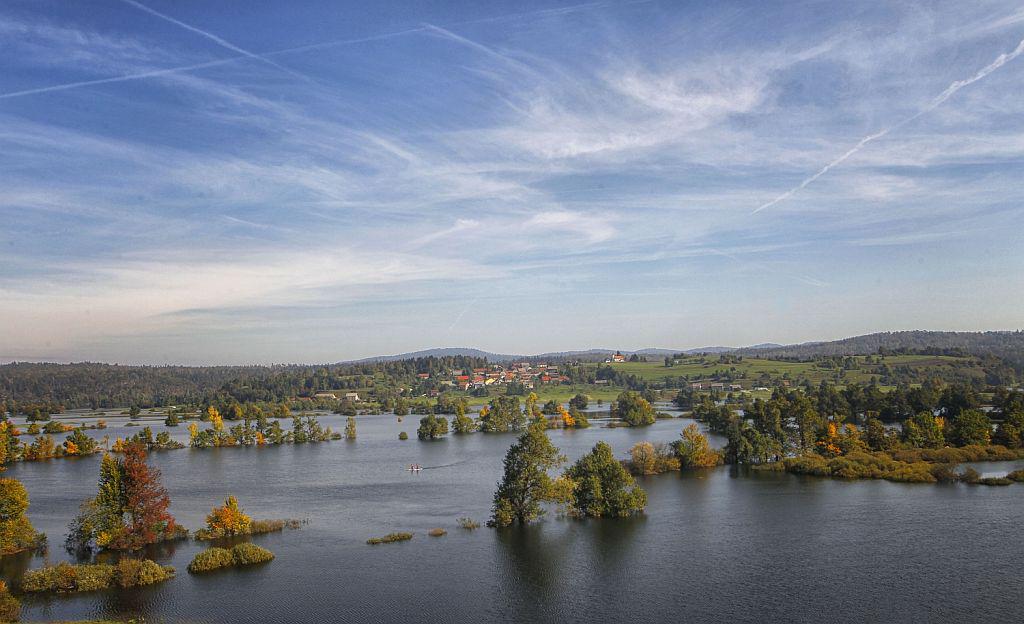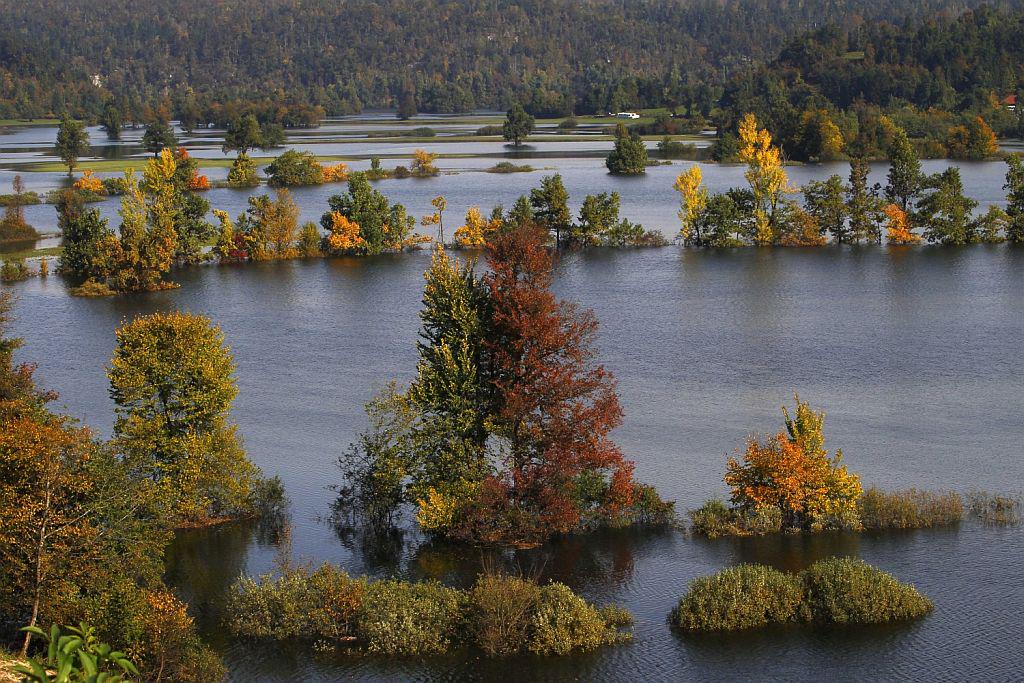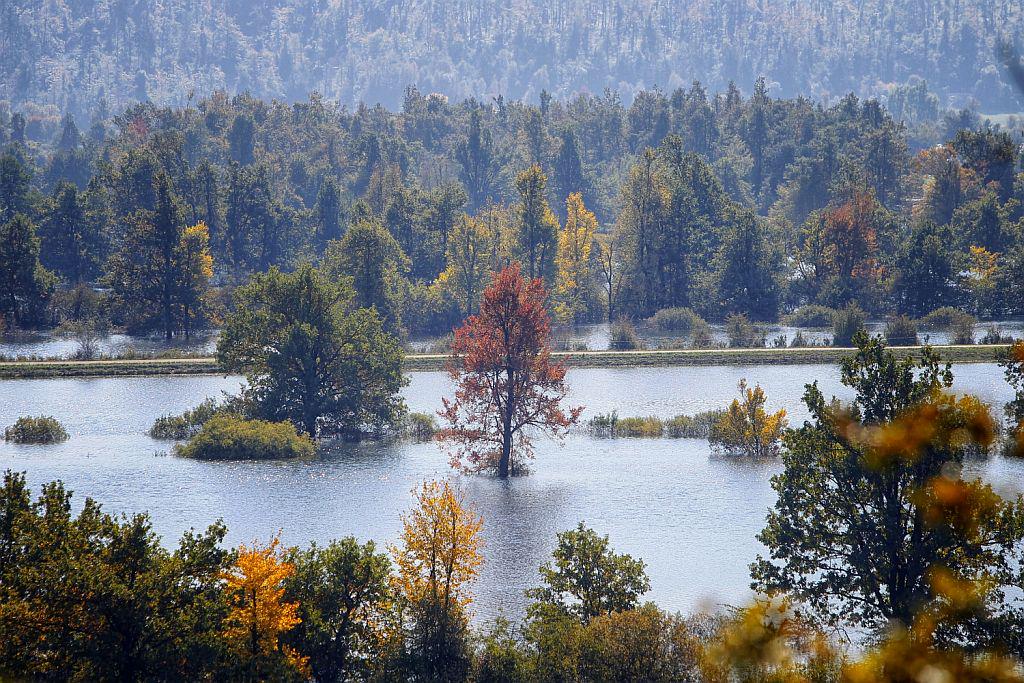
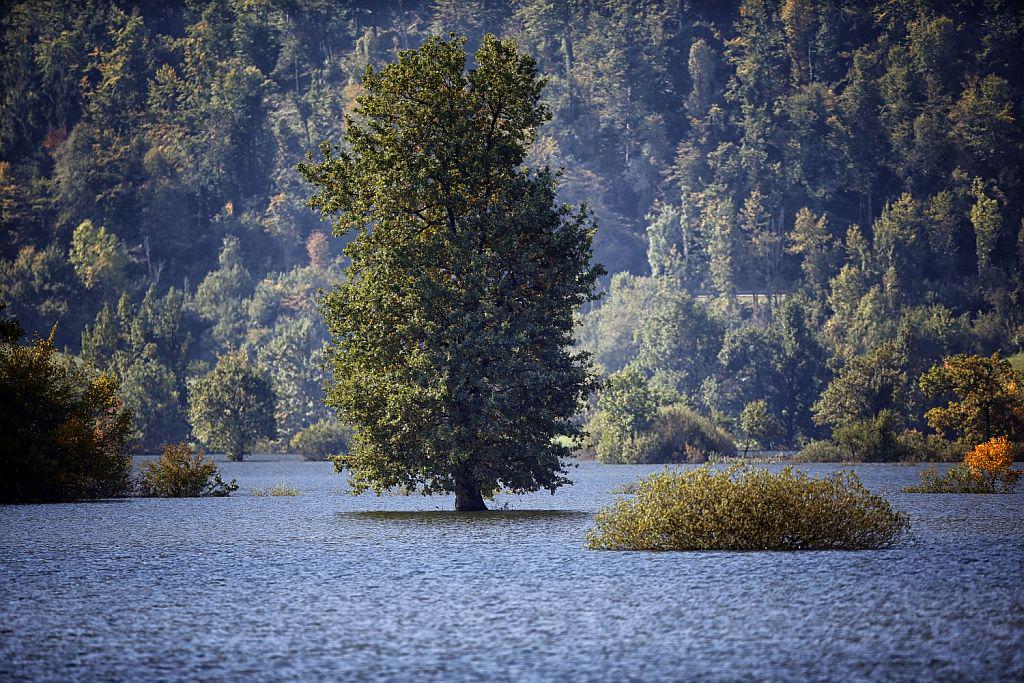
The erosion of limestone and dolomite layers has given the field its flat appearance, made even more spectacular by the steep hills that surround it. The area, 5 kilometers in length, is still shaped by water. Some of the water bubbles up from deep below ground, while streams descend from the surrounding mountains.
The longest stream in the area, the Unica river, meanders through the field on its way towards the Slovenian capital, where it is known as the Ljubljanica. Parts of Planinsko Polje turn into lakes several times a year, most often after heavy rains. When the rain stops, the excess water eventually disappears down 150 sinkholes spread across the field.
Several times during the 20th century – and as late as the 1970s -, the authorities came up with plans to turn the field into an artificial lake that would power a hydroelectric plant. The plans were never realized – a development that proved to be fortunate for the area’s unique environment.
And what an environment it is: much of the field is covered with marshland, but it’s still easily accessible on foot or bicycle. Patches of ancient oaks and other trees are surrounded by colorful flowers, including the endemic blue amethyst meadow squill, the red sword lily (named for its sword-like shape), and the purple anacamptis palustris orchid.
The natural environment of the area also provides an ideal habitat for various species of animals. Deer are frequently seen on the field, while bear and lynx are common in the surrounding hills. Planinsko Polje is a haven for butterflies: 78 species are thought to live in the area. As a habitat of the rare corn crake, the field has also been officially designated as an “Important Bird Area.”
A special attraction of the field is Planinska Jama, a cave system rich in cave life, as well as stalagmites and stalactites. Several underwater lakes attract speleologists from Slovenia and beyond, but much of the cave is open to casual visitors.
Parts of Planinsko Polje have been protected since 1971 and the entire field now enjoys permanent protection on the national level – ensuring that one of Slovenia’s most interesting and unusual environments will escape the impact of human development.




















































